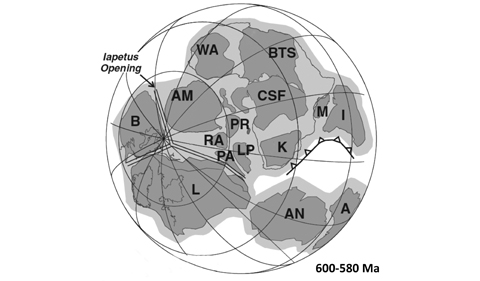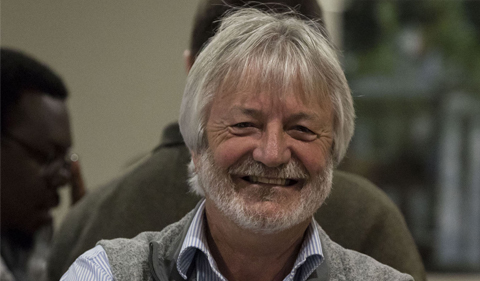Yale News covers the debate about the existence of supercontinent Pannotia, posited by R. Damian Nance, in an article headlined Pannotia: A supercontinent on trial.
Nance, Distinguished Professor Emeritus of Geology at Ohio University, is now a visiting fellow at Yale.
In separate articles published recently by The Geological Society of London, Yale geologists David Evans, R. Damian Nance, and their colleagues debate the existence of Pannotia, a supercontinent that may — or may not — have formed near the South Pole about 600 million years ago, around the time when animals were first evolving.
The articles put Pannotia on trial. Evans, the head of Berkeley College, professor of Earth and planetary sciences, and director of the Yale Paleomagnetism Laboratory, took the role of prosecutor; Nance, professor emeritus of geology at Ohio University and a visiting research fellow at Yale, was part of Pannotia’s defense.
Evans and Nance spoke with YaleNews about the case to be made for — and against — Pannotia….

Figure 2: One reconstruction of Pannotia as it existed 580 to 600 million years ago. Major continental components: A=Australia, AM=Amazonia (South America), AN=Antarctica, B=Baltica (Europe), BTS and CSF=portions of South America and North Africa, I=India, K=Kalahari (South Africa), L=Laurentia (North America), M=Madagascar, WA=West Africa. Siberia is not shown.
Nance recently authored Pannotia: in defence of its existence and geodynamic significance in the Geological Society of London Publications’ Lyell Collection.
Abstract: The status of Pannotia as an Ediacaran supercontinent, or even its mere existence as a coherent large landmass, is controversial. The effect of its hypothesized amalgamation is generally ignored in mantle convection models claiming the transition from Rodinia to Pangaea represents a single supercontinent cycle. We apply three geodynamic scenarios to Pannotia amalgamation that are tested using regional geology. Scenarios involving quasi-stationary mantle convection patterns are not supported by the geological record. A scenario involving feedback between the supercontinent cycle and global mantle convection patterns predicts upwellings beneath the Gondwanan portion of Pannotia and the arrival of plumes along the entire Gondwanan (but not Laurentian) margin beginning at c. 0.6 Ga. Such a scenario is compatible with regional geology, but the candidates for plume magmatism we propose require testing by detailed geochemical and isotopic studies. If verified, this scenario could provide geodynamic explanations for the origins of the late Neoproterozoic and Early Paleozoic Iapetus and Rheic oceans and the terranes that were repeatedly detached from their margins.




















Comments